
| What is Flavor and Fortune? |
| How do I subscribe? |
| How do I get past issues? |
| How do I advertise? |
| How do I contact the editor? |
Read 12697458 times
Connect me to:
| Home |
| Articles |
| Book reviews |
| Letters to the Editor |
| Newmans News and Notes |
| Recipes |
| Restaurant reviews |
| Article Index (all years, slow) |
| List of Article Years |
| Article Index (2025) |
| Article Index (last 2 years) |
| Things others say |
| Related Links |
| Log In... |
| Authors |
| Categories & Topics |
Ghost Festival in Taiwan's Tainan City
| by Ying Fa Hung and Lin Zane |
Holidays and Celebrations
Winter Volume: 2007 Issue: 14(4) page(s): 13 and14
Ghosts play a special role in the Chinese world. While there are many complicated feelings about them, over time, they have become part of many rituals. Among festivals that include them, the most important may be the one called 'The Ghost Festival.'
In Tainan, a city in southern Taiwan where many Chinese from the People's Republic of China went to live, the Ghost Festival is celebrated with considerable traditional atmosphere. This article introduces this festival and its offerings in Taiwan and discusses its symbolism in the city of Tainan when people worship ghosts.
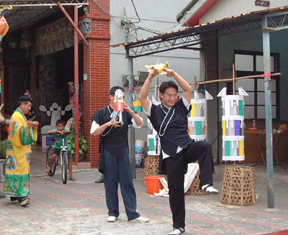 The Ghost Festival occurs during July on a date found on China's traditional Lunar calendar. Actually, the Chinese believe that this is a month belonging to ghosts; so they call it the 'Ghost Month.' During this lunar month, they believe that guilty ghosts are released from their hell and enter man's world to receive offerings including food and articles for daily use.
The Ghost Festival occurs during July on a date found on China's traditional Lunar calendar. Actually, the Chinese believe that this is a month belonging to ghosts; so they call it the 'Ghost Month.' During this lunar month, they believe that guilty ghosts are released from their hell and enter man's world to receive offerings including food and articles for daily use.
A ritual occasion held for ghosts is called Pu-du. When it occurs can differ depending on time, place, objects, ritual holders, and ritual performers. These ghost rituals are usually performed by Buddhist and Taoist priests, but common people can and do provide ritual offerings; they are also called Pu-du.
In Taiwan, Pu-du is not only held during Ghost Month; it is usually held on three occasions. One is during Ghost Month when temples, companies, and households hold Pu-du. Another is when Giao, advanced rituals in Taoism, are practiced. This happens on the last day of Giao when Pu-du is held. The above two times are reserved to worship ghosts. They are done so that the ghosts will not disturb man's world and will not spoil order in human life. The third time Pu-du is held is on the day before a funeral. Its purpose on that day is to prevent other ghosts from bullying the recently departed individual.
There are several common offerings for ghosts on these occasions. Some, taken by the authors, are pictured with this article that explores the meanings of those practiced. They are seen as a way to understand them and their purposes. They are divided below into their main cultural components.
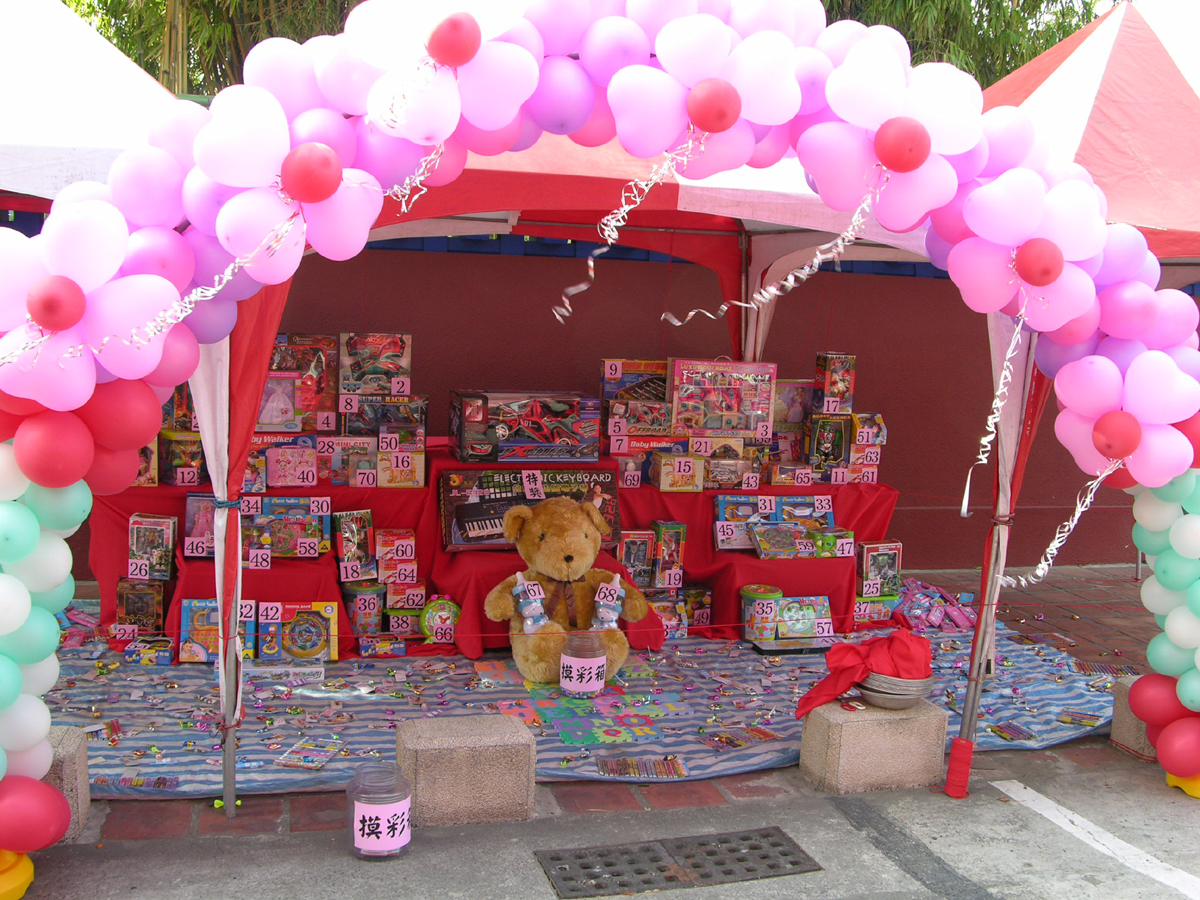 Food Offerings: These are given by people or priests. They are known as the 'Three Sacrifice,' the 'Five Sacrifice,' and a 'Pig' and a 'Goat.' These offerings are examples of people's largess during Ghost Festivals.
Food Offerings: These are given by people or priests. They are known as the 'Three Sacrifice,' the 'Five Sacrifice,' and a 'Pig' and a 'Goat.' These offerings are examples of people's largess during Ghost Festivals.
The Three Sacrifice offerings consist of a boiled chicken, a boiled duck, and some boiled meat. The Five Sacrifice ones include boiled foods, too, and a chicken, duck, fish, some meat, and a big squid or some shrimp. In addition to these boiled foods, a whole raw pig and a whole raw goat are presented.
DAILY USE ARTICLES are for ghosts to cleanse themselves and make themselves decent. These are common items such as combs, soap, toothbrushes, toothpaste, cups, and towels. In addition, there are things for females including perfume, cosmetics, needles, and other sewing items.
FEASTS: are made up of ten to twelve dishes, a pan of rice, a pot of soup, and wines or other beverages. Of course, cups, bowls, and chopsticks are given so that the ghosts can consume the foods.
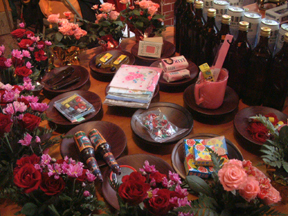 ENTERTAINMENT: is provided for the ghosts, as well. It can include mahjong tiles and boards, playing cards, Chinese chess, and Chinese checker sets. Sometimes, toys for children are among the offerings.
ENTERTAINMENT: is provided for the ghosts, as well. It can include mahjong tiles and boards, playing cards, Chinese chess, and Chinese checker sets. Sometimes, toys for children are among the offerings.
ITEMS OF APRECIATION are also offered, usually placed on tables. They are offerings of various shapes, and they can be quite decorative. They might be made of dough, or they might be hand-carved fruits. Usually, there are many of them displayed on many tables. They can include longan fruit which is tropical, and when growing it produces many individual fruits. Its productivity symbolizes the availability of lots of food offerings for ghosts. Moreover, as it is a round in shape, the Chinese believe it corresponds to perfection. Longan fruit is used frequently for worship. 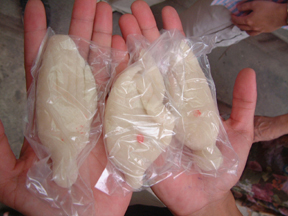 Buddha's hand, made of dough and seen on this page, is an offering with a different religious meaning. In Buddhist and Taoist ceremonies it stands for the hand of Buddha saving guilty ghosts. Priests and monks throw Buddha's hands to people during Pu-du and many people are keen to grab one. It is said that this hand can protect people after they eat it. Betel nuts and cigarettes are essential while worshiping ghosts and the dead in hell. These things represent those in lower social ranks, and they reflect the real world to the ghost or other world. Betel nuts, cigarettes, and wine are used as offerings to please the ghosts. They show that the ghosts will not be a disturbance in man's world; they are presented while worshiping ghosts.
Buddha's hand, made of dough and seen on this page, is an offering with a different religious meaning. In Buddhist and Taoist ceremonies it stands for the hand of Buddha saving guilty ghosts. Priests and monks throw Buddha's hands to people during Pu-du and many people are keen to grab one. It is said that this hand can protect people after they eat it. Betel nuts and cigarettes are essential while worshiping ghosts and the dead in hell. These things represent those in lower social ranks, and they reflect the real world to the ghost or other world. Betel nuts, cigarettes, and wine are used as offerings to please the ghosts. They show that the ghosts will not be a disturbance in man's world; they are presented while worshiping ghosts.
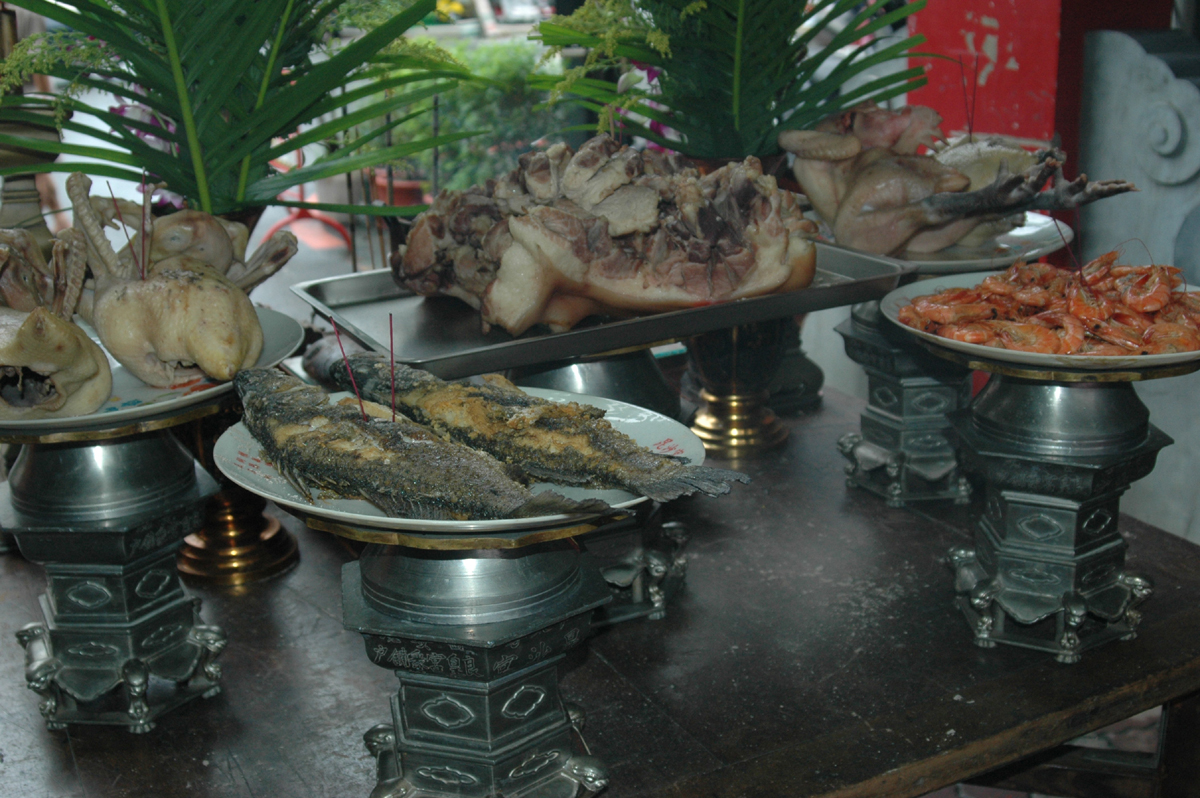 RESPECT AND FEAR OF GHOSTS does exist. Offerings to them are a ritual exchange expressing their complex feelings toward ghosts. They are afraid of two kinds of ghosts, those from people who die in accidents and those who have no descendants. Both of these kinds of ghosts are said to be harsh and aggressive. They are probably ghosts who bring bad luck or disaster to humans. Therefore, to worship them is to tame them and make them come under the authority of the Gods of Taoism or Buddhism. Worshiping them can prevent bad luck or disasters that they might cause.
RESPECT AND FEAR OF GHOSTS does exist. Offerings to them are a ritual exchange expressing their complex feelings toward ghosts. They are afraid of two kinds of ghosts, those from people who die in accidents and those who have no descendants. Both of these kinds of ghosts are said to be harsh and aggressive. They are probably ghosts who bring bad luck or disaster to humans. Therefore, to worship them is to tame them and make them come under the authority of the Gods of Taoism or Buddhism. Worshiping them can prevent bad luck or disasters that they might cause.
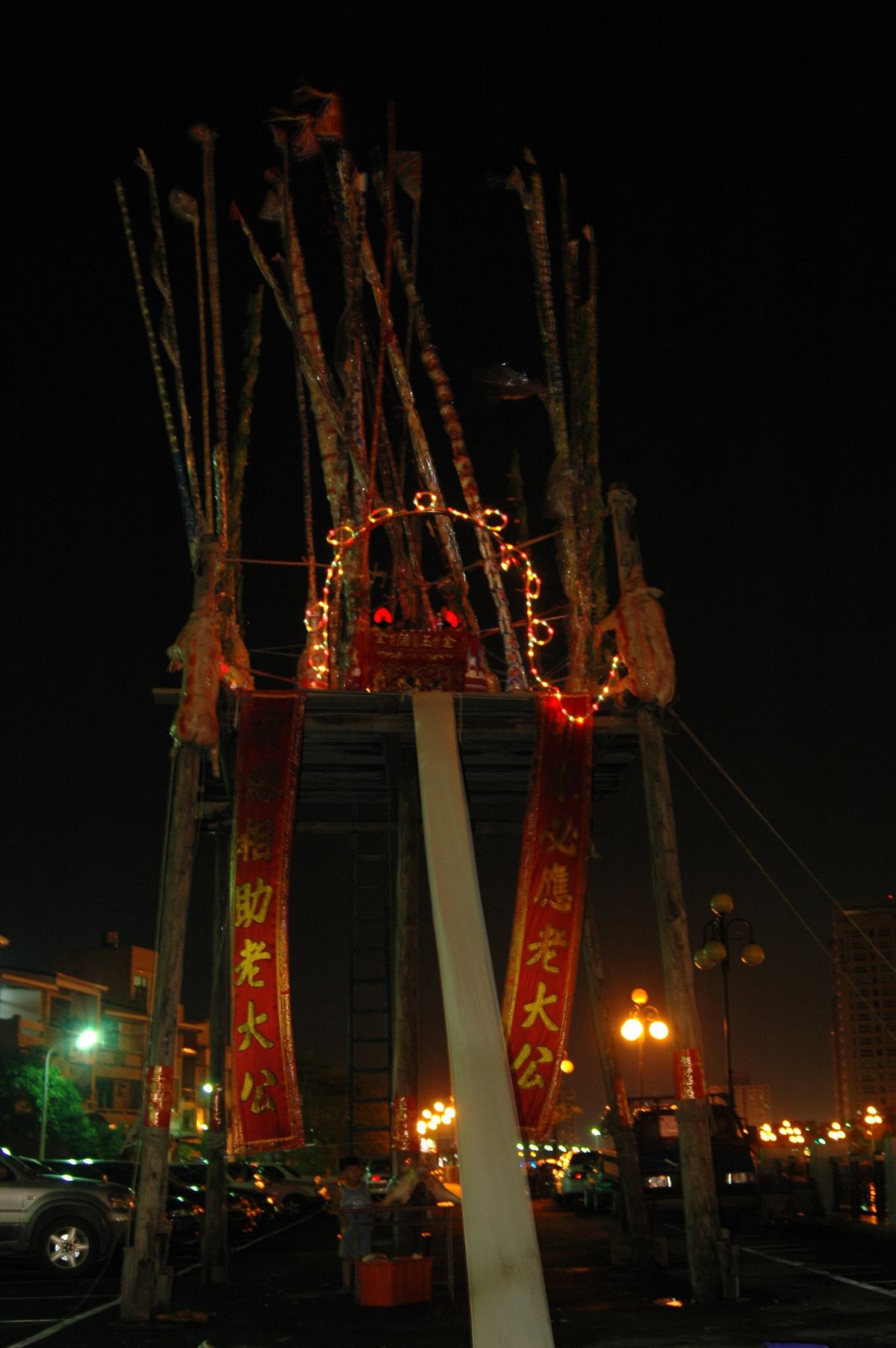 IMAGINATION AND SYMBOLIC MEANINGS are reasons for ghost offerings. People try to imagine what the other world is. They see their daily life as a reflection of that world. Some ghost offerings are adopted because their shapes provide special hints and add meanings. These can be through words or by their material shapes as used in their ceremonies. They can show several aspects of interactions and relationships.
IMAGINATION AND SYMBOLIC MEANINGS are reasons for ghost offerings. People try to imagine what the other world is. They see their daily life as a reflection of that world. Some ghost offerings are adopted because their shapes provide special hints and add meanings. These can be through words or by their material shapes as used in their ceremonies. They can show several aspects of interactions and relationships.
PU-DU is both a religious ritual and a social function. It offers a stage for temples to show off the number of offerings given. It also offers a complex set of other cultural meanings associated with the Chinese culture and with its local people in Tainan.
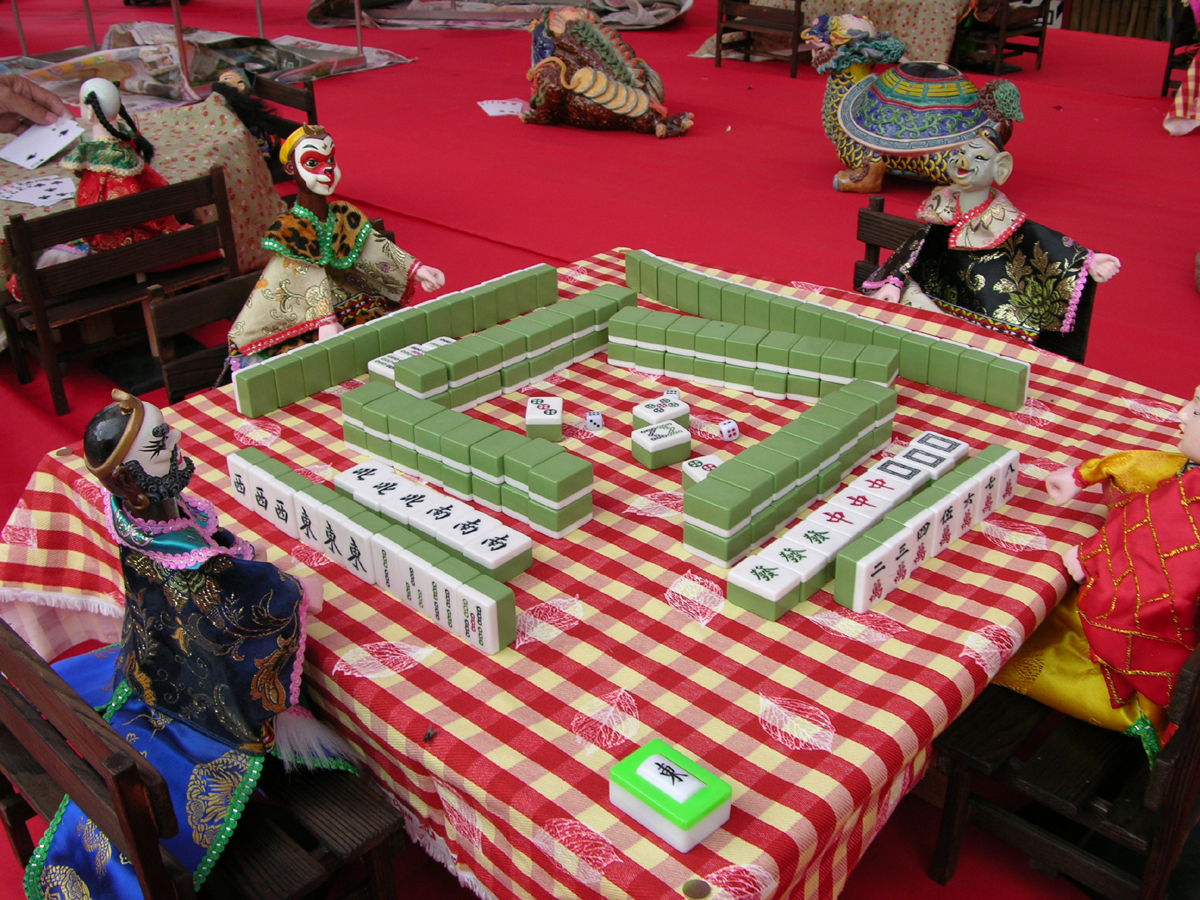 OVERALL, this is a but brief introduction to Tainan's Ghost Festival. Those interested in learning more can check out the following: Stephen Teisern's The Ghost Festival in Medieval China published in Princeton NJ by Princeton University Press in 1988; and Ghosts Festivals, Culture, and Symbols in Tainan City. This was in the 2007 Journal of Chinese Dietary Culture Volume 3(1) on pages 81 through 136. The latter is in Chinese.
OVERALL, this is a but brief introduction to Tainan's Ghost Festival. Those interested in learning more can check out the following: Stephen Teisern's The Ghost Festival in Medieval China published in Princeton NJ by Princeton University Press in 1988; and Ghosts Festivals, Culture, and Symbols in Tainan City. This was in the 2007 Journal of Chinese Dietary Culture Volume 3(1) on pages 81 through 136. The latter is in Chinese.
Accompanying this article are food pictures and other things and some other views taken during a recent Ghost Festival in Tainan, Taiwan.
_____
Ying Fa Hung studies folk customs, mainly of religion and politics, also ceremonies and food, and ancestors and fables at the Center for Geographic Information Science, Research Center for Humanities, Academia Sinica, Taipei, Taiwan. Zane Lin studies at the College of Liberal Arts, National Chengchi University.

Copyright © 1994-2025 by ISACC, all rights reserved
Address
3 Jefferson Ferry Drive
S. Setauket NY 11720